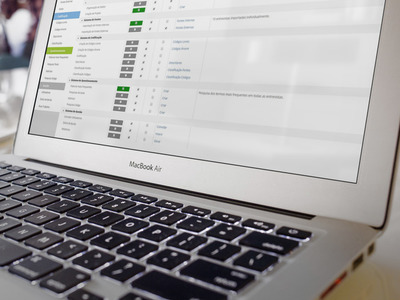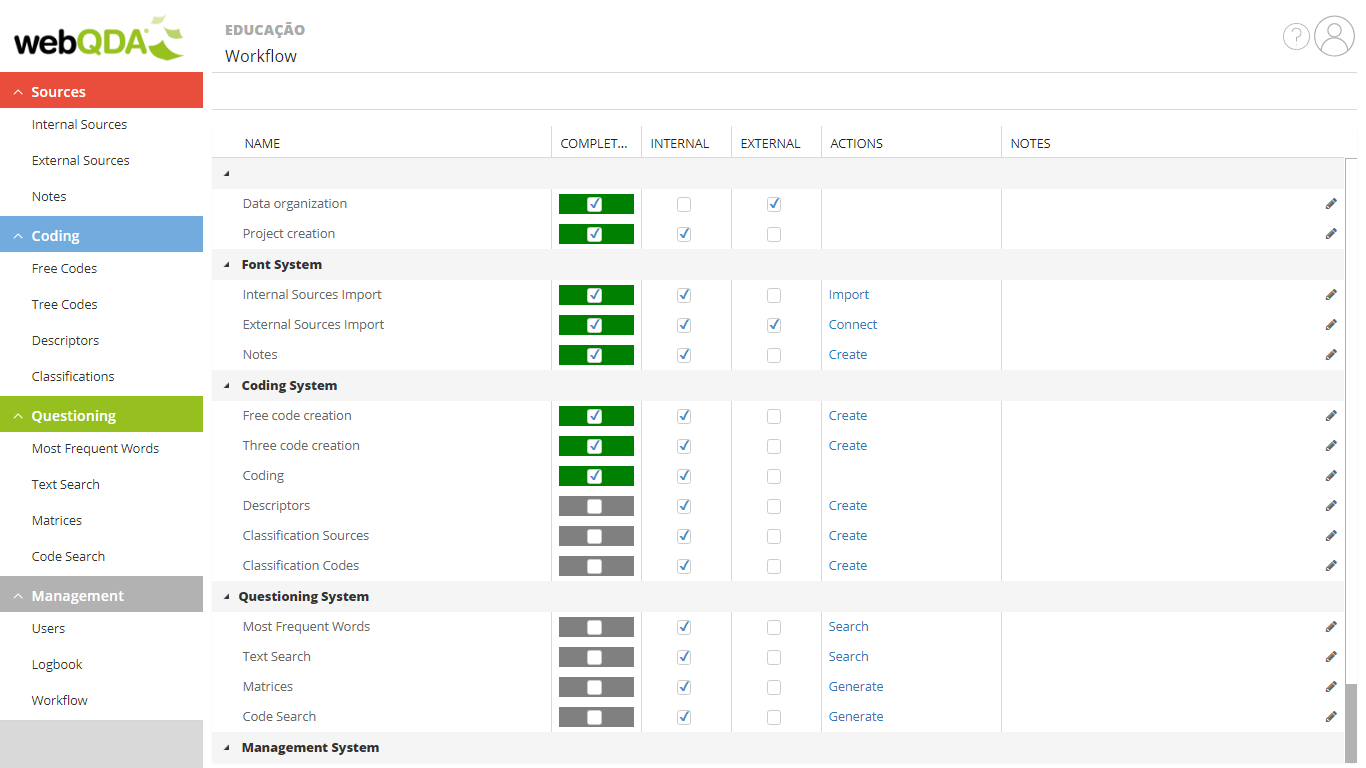
Recently, a text titled “Intuitive and Easy-to-Use Qualitative Analysis Support Software: What is it?” was published in the webQDA Blog. Costa, Reis and Faria (2016) shared the text published in the editorial board of the Iberian Journal of Information Systems and Technologies (issue 9), where they addressed “Qualitative Research Through Software Use: Methodological Workflows” in the perspective of the Researcher who uses qualitative analysis software.
In this text, we present a new feature available to webQDA users: Workflow.
The Workflow feature is available in the Management System and has the structure of a table (see figure 1) which shows the steps that the user can follow in webQDA. Some projects may not include all steps, depending on the research design.
The steps presented follow the “natural order” of the software. However, the user does not have to follow the order presented. Many steps can be performed in parallel. For example, inviting users and importing data are independent tasks that can be performed in any order.
When you check the “Complete” checkbox, the step is marked as done (it changes from gray to green). The user can always revert a decision and mark the step as not complete. This markup is for user records only, not affecting other tasks performed in webQDA.
In the “Actions” column the user has direct access to the various functionalities (create, generate, export …), with the link to the respective area of webQDA.
The user can also annotate a step by clicking on the “Notes” box. Annotations are shared among all collaborating users and can be edited by all of them..
The “Internal” column means that the step is supported by webQDA. The “External” column means that external tools or tasks can be carried out in order to contribute to the smooth running of the project in question.

Figure 1 – Workflow in webQDA
This new feature will allow the user to control their work path in webQDA, as well as interconnect with other functionalities. Advantages to the research process:
– More thorough and effective work organization;
– Better tracking and control of completed and pending tasks;
– Better communication between collaborators.
References
Costa, A. P., Faria, B. M., & Reis, L. P. (2016). Investigação Qualitativa Através da Utilização de Software: Workflows Metodológicos (Carta Editorial). Revista Lbérica de Sistemas E Tecnologias de Informação, (19), 9–12. https://doi.org/10.17013/risti.19.ix–xii/





Leave a comment